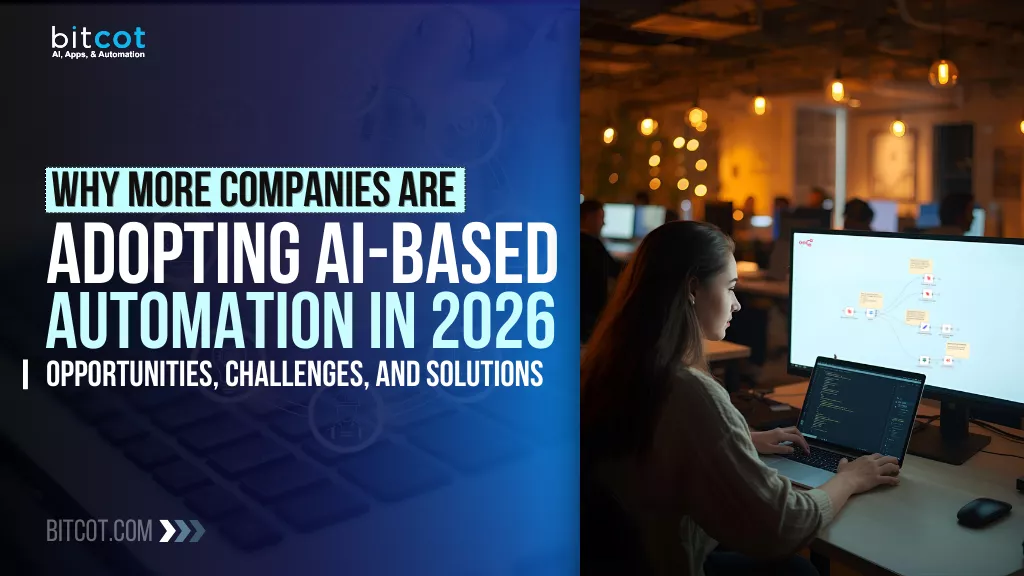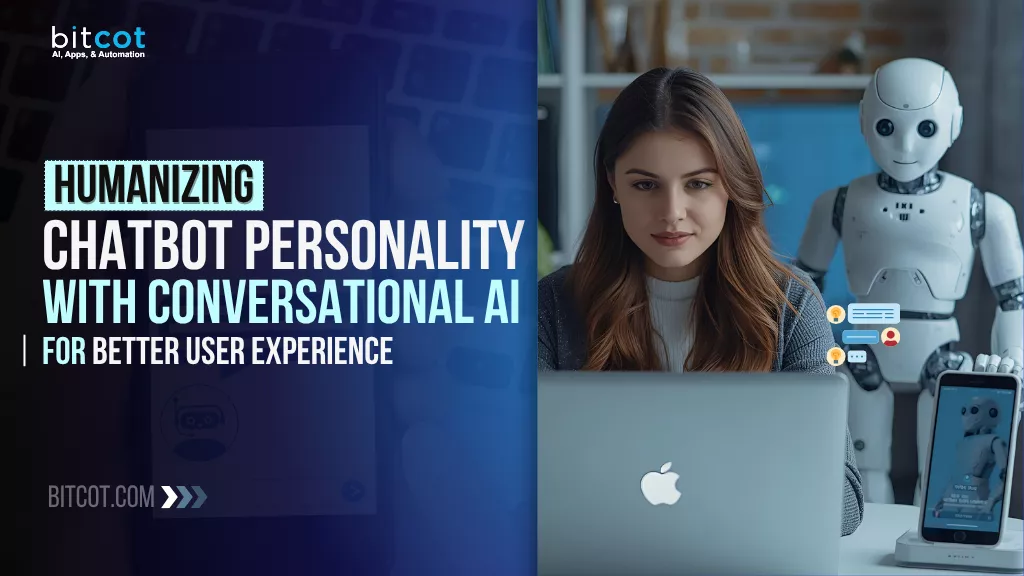
Your customers are one bad chatbot interaction away from choosing your competitor.
Right now, potential buyers are landing on your website ready to purchase, but instead of getting help, they face robotic responses and frustrating dead ends.
The brutal truth: you’re losing thousands of dollars every day because your chatbot can’t hold a human conversation.
Over 80% of customers report at least one poor chatbot experience, and 55% never return after a bad interaction.
If you already know this, why keep running that same rule-based chatbot? Still watching support tickets pile up and cart abandonment rise?
You don’t need another article explaining why chatbots matter. You need solutions that work now.
While you read this, competitors are deploying conversational AI with personality-driven design, capturing the customers you are losing.
Companies using personality-based AI see customer satisfaction rise 20 to 30 percent and support costs drop up to 30 percent, while conversions climb significantly.
What’s at stake is clear: every delay means lost revenue, frustrated customers, and growing competitive disadvantage.
The good news is that transforming your chatbot does not require a complete overhaul. It only takes the right strategy, the right technology partner, and a commitment to proven solutions.
Bitcot turns this challenge into measurable results. Our AI automation solutions combine natural language processing, sentiment analysis, and personality design frameworks aligned with your brand.
This article explains how conversational AI humanizes chatbot personality through technologies and strategies that separate humanlike bots from robotic failures.
Let’s get started.
Why Traditional Chatbots Fail at Customer Engagement
Think about the last chatbot interaction most customers experience. Does it feel like talking to a helpful virtual assistant? Or does it feel like filling out an automated form that barely understands their needs?
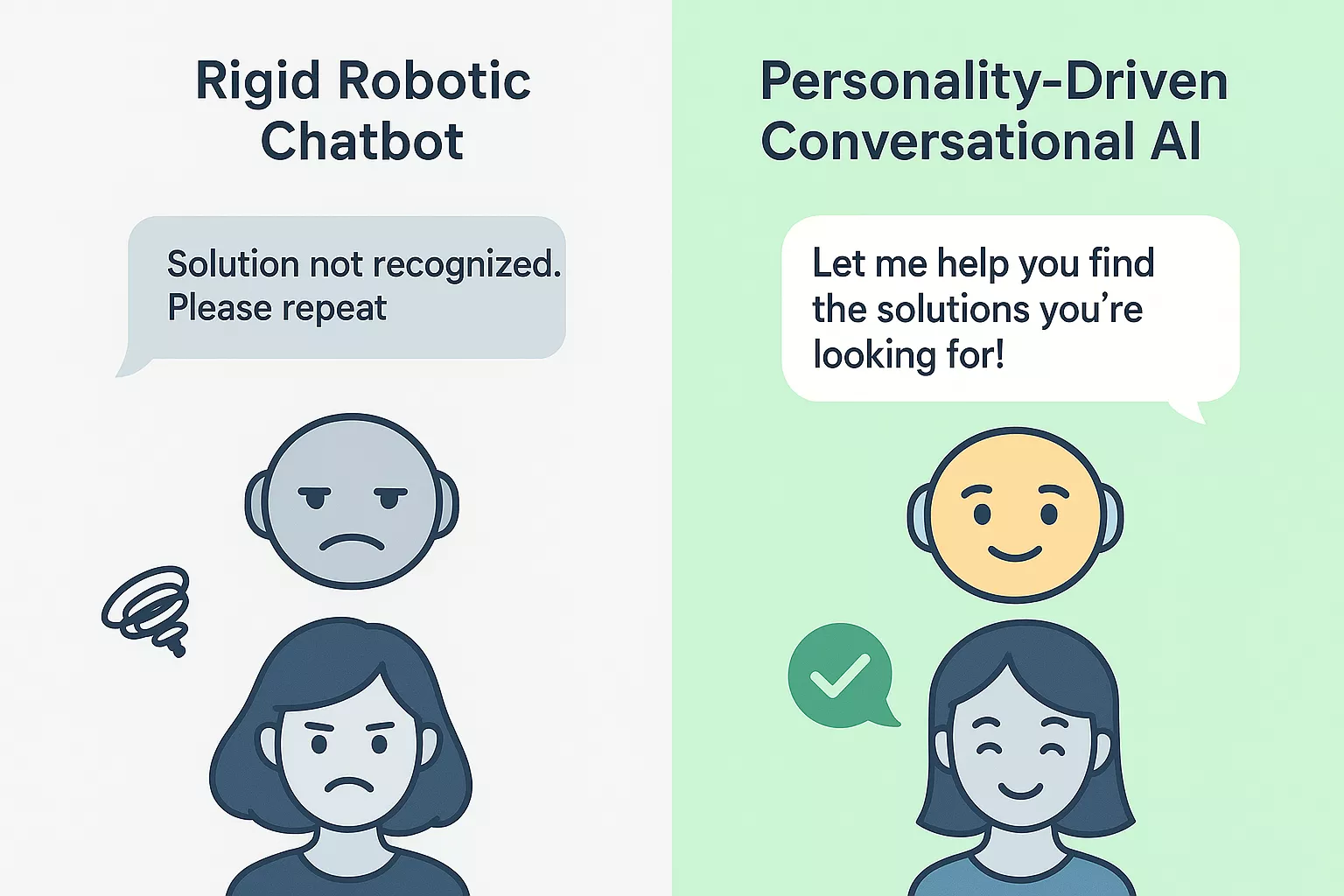
Most businesses deploy chatbots that technically work. They answer questions, route tickets, and collect information. But they fail at the one thing that matters most: making customers feel heard and understood.
Traditional vs. Personality-Driven Chatbots: Key Differences
| Feature | Traditional Rule-Based Chatbots | Personality-Driven Conversational AI |
| Response Style | Scripted, rigid responses | Natural, contextual conversations |
| Understanding | Keyword matching only | Intent recognition with NLP |
| Personality | Generic, robotic tone | Customizable brand personality |
| Context Memory | Forgets previous messages | Remembers entire conversation |
| Emotion Detection | None | Real-time sentiment analysis |
| Learning Ability | Static, requires manual updates | Learns from every interaction |
| Customer Satisfaction | 40-50% | 70-80% |
| Completion Rate | 30-40% | 65-85% |
| Escalation to Humans | 50-60% of conversations | 15-25% of conversations |
Traditional rule-based chatbots operate on rigid scripts and decision trees. They follow predetermined conversation flows. When customers ask questions outside their programming, these bots respond with generic phrases like “I don’t understand” or “Let me transfer you to a human agent.” Every interaction feels mechanical, impersonal, and frustrating.
This creates a major problem. When customers feel like they’re talking to a robot, trust disappears. When trust fades, so does customer loyalty. And when loyalty drops, revenue follows.
Business Costs of Poor Chatbot Personality Design
The situation runs deeper than surface-level frustration.
Customers aren’t just annoyed – they’re actively avoiding automated channels. They choose to wait on hold for 20 minutes rather than engage with chatbots. They abandon purchases mid-conversation. They share negative experiences on social media and review platforms.
The financial impact is serious. Research shows that 86% of customers will abandon a brand after just two bad experiences. When that experience involves a cold, unhelpful chatbot, the loss extends beyond a single transaction to lifetime customer value.
Competitors are watching. Smart companies are already deploying conversational AI with sophisticated personality design. They’re winning the customers others are losing. They’re building the relationships that personality-free chatbots fail to create.
Meanwhile, internal teams drown in escalated tickets because existing chatbots can’t handle basic emotional intelligence. Support costs multiply instead of decreasing. Automation investments fail to deliver ROI—they create new problems instead.
The gap between customer expectations and chatbot capabilities keeps widening. Every day companies operate with personality-free chatbots, they fall further behind.
How Conversational AI Creates Human-Like Chatbot Interactions
Conversational AI powered by natural language processing (NLP) and machine learning changes this entire dynamic.
Unlike traditional flow-based chatbots that rely on scripted responses, conversational AI creates dynamic, personality-driven interactions. It doesn’t just process words. It understands context, interprets user intent, and responds with appropriate emotional intelligence and sentiment analysis.
This technology allows businesses to design chatbot personalities that align perfectly with brand voice. Whether the brand is professional and authoritative or friendly and casual, conversational AI with natural language understanding adapts its communication style to match.
Key Technologies Behind Personality-Driven Conversational AI
Four core technologies work together to create chatbots that feel genuinely human and responsive to customer needs.
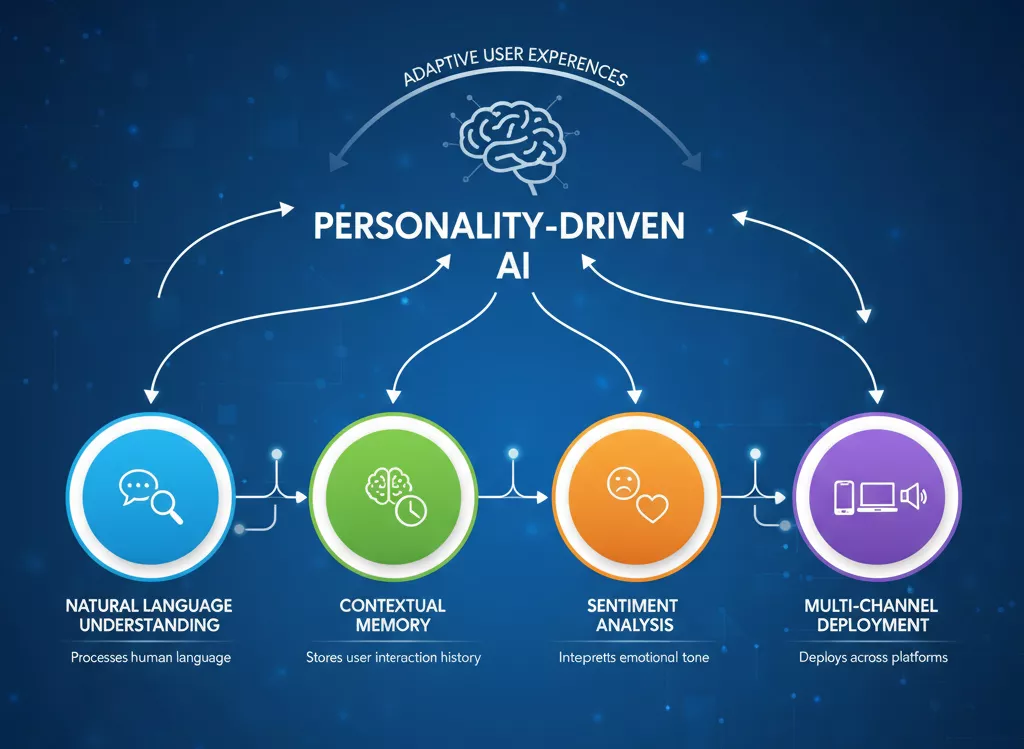
Natural Language Understanding (NLU): Modern conversational AI processes language the way humans do. It recognizes synonyms, understands slang, and interprets questions even when they’re poorly worded. This means customers can communicate naturally instead of learning specific commands or keywords.
Contextual Memory and Conversation History: Advanced conversational AI remembers previous interactions within a conversation. If a customer mentions frustration in message three, the AI acknowledges that emotion in message seven. This continuity creates the feeling of talking to someone who actually listens.
Adaptive Tone Matching with Sentiment Analysis: The best conversational AI systems analyze customer sentiment in real-time and adjust responses accordingly. Sentiment analysis enables the AI to become more empathetic and solution-focused when a customer is upset. When a customer is playful, the AI matches that energy appropriately.
Personality Consistency Across Channels: Businesses can program specific personality traits into conversational AI. Whether the goal is helpful but not pushy, knowledgeable but humble, or efficient but warm, conversational AI maintains these characteristics across thousands of interactions on multiple platforms and messaging channels.
Real Business Impact of Humanized Chatbot Personality
When businesses implement conversational AI with a well-designed personality, the results are measurable and significant.
Customer satisfaction scores increase by an average of 20-30% when chatbots demonstrate personality traits like empathy, humor, and patience. Resolution times decrease because customers engage more willingly with personalities they find approachable.
Support teams experience immediate relief. Instead of handling basic queries escalated by robotic chatbots, they focus on complex issues that genuinely require human expertise. This improves team morale and reduces turnover.
Sales conversion rates improve dramatically. Conversational AI with personality can build rapport during the research phase, address objections with appropriate empathy, and guide customers toward purchase decisions without feeling pushy.
Most importantly, customer retention improves. When people enjoy interacting with chatbots, they return more frequently. They recommend the service to others. They become advocates rather than critics.
For large organizations, Enterprise AI chatbot development requires scalable architecture. This architecture must maintain personality consistency across thousands of simultaneous conversations. It also needs to integrate seamlessly with existing CRM, ERP, and data systems.
Building an Effective Chatbot Personality Strategy
Creating a chatbot with genuine personality isn’t about adding jokes or emojis to responses. It requires strategic thinking about brand identity, customers, and business objectives.
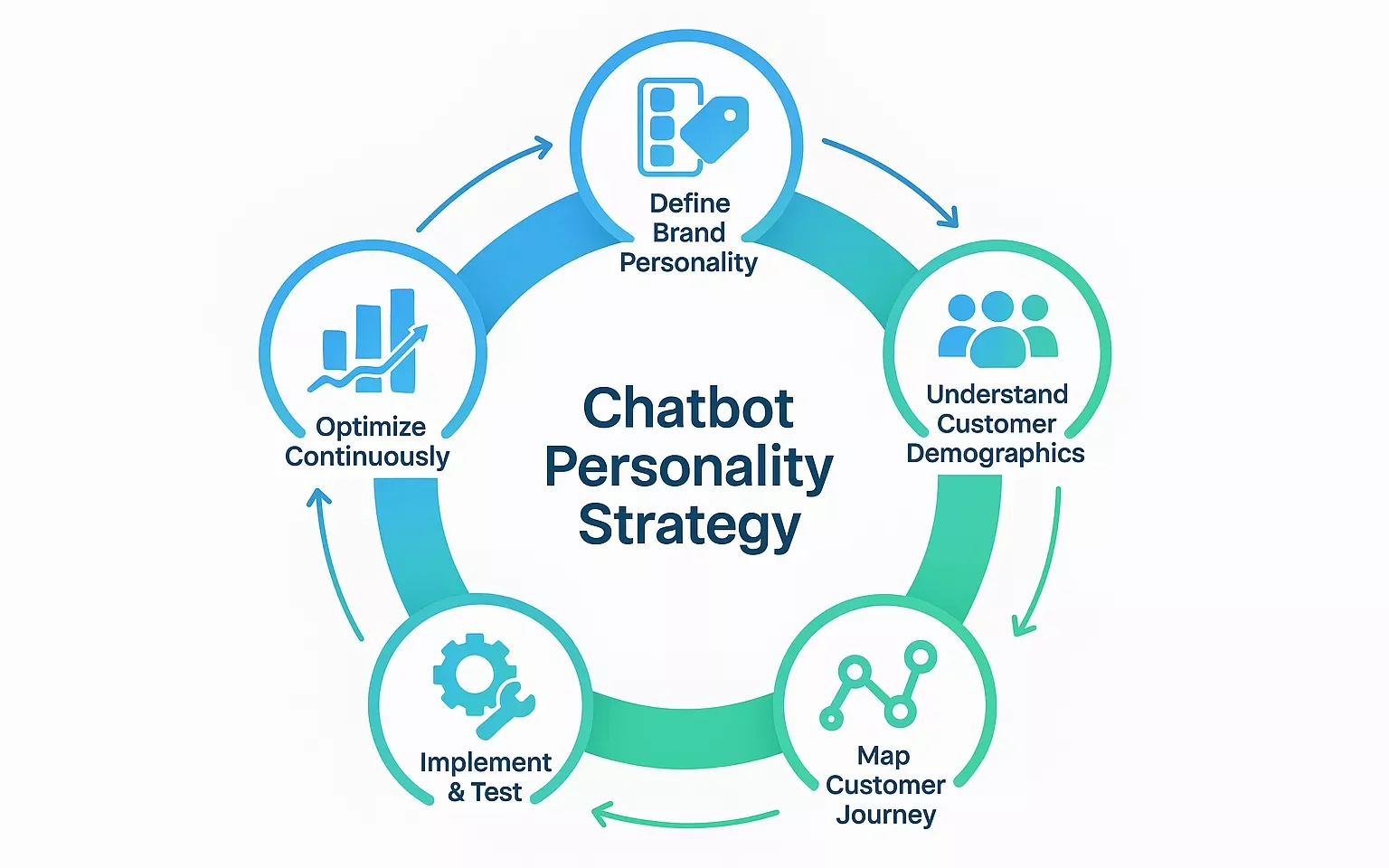
Define Your Brand Personality First
Before configuring any AI, companies must clarify their brand’s personality traits. Is the brand innovative or traditional? Bold or careful? Friendly or formal? Chatbots should embody these characteristics consistently.
Document specific language guidelines. What words does the brand use? What words does it avoid? How does the brand handle conflict? How does it celebrate success? Conversational AI needs these parameters to maintain brand integrity.
Understand Your Customer Demographics
Different audiences respond to different personality types. Enterprise clients might prefer a more formal, knowledgeable assistant. Younger consumers might engage better with casual, friendly interactions.
Analyze customer data to understand communication preferences. Look at support ticket language, social media interactions, and customer feedback. This research informs personality design that resonates with specific audiences.
Map Personality to Customer Journey Stages
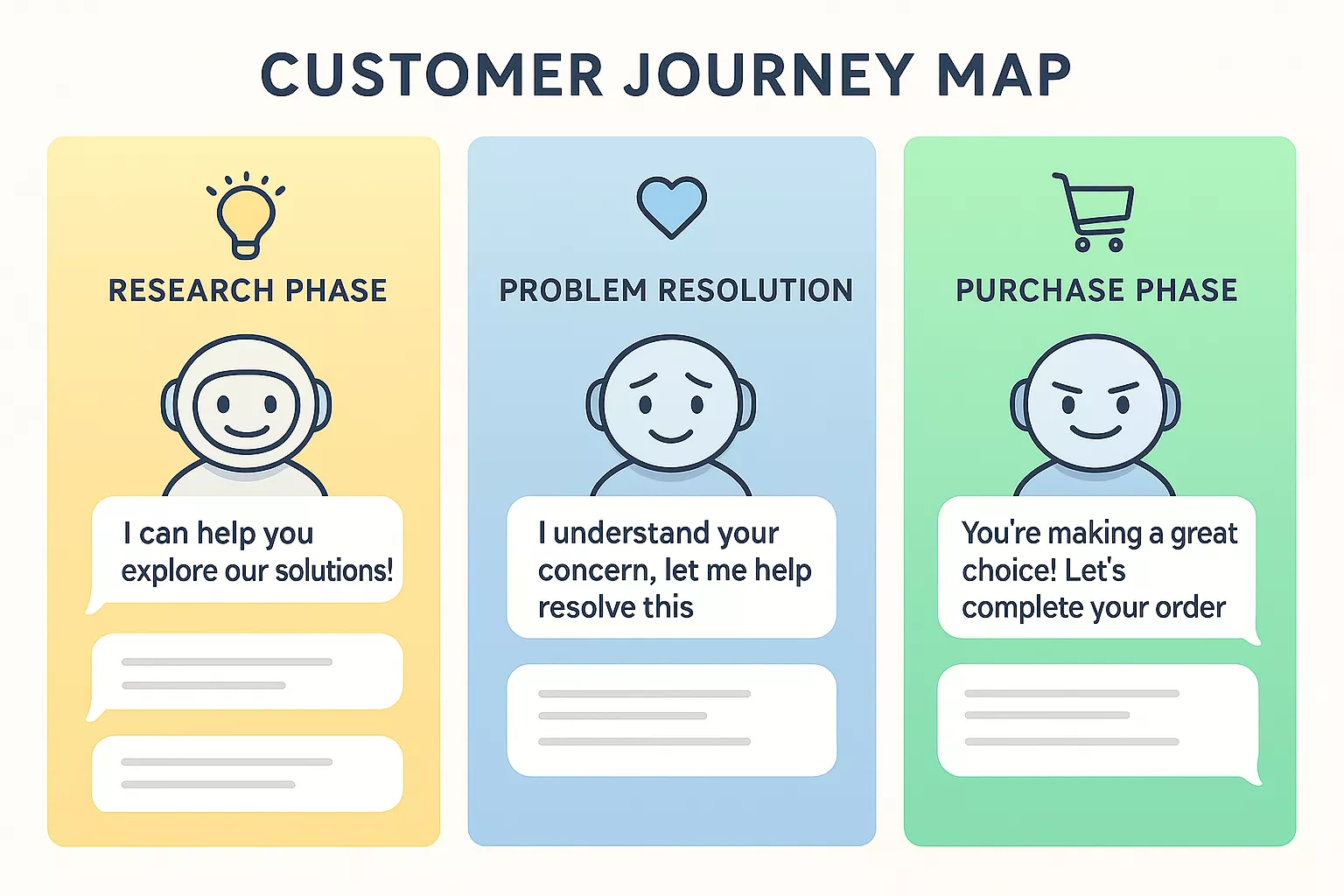
Chatbots don’t need the same personality at every interaction point. Someone researching products needs helpful guidance. Someone experiencing a problem needs empathetic support. Someone ready to purchase needs confident, clear direction.
Design personality variations that align with different journey stages. This creates more authentic experiences because the emotional tone matches the customer’s current needs.
Implement Progressive Personality Development
Start with a foundational personality that handles core interactions well. Monitor how customers respond. Collect feedback. Identify patterns in successful conversations.
Use this data to refine conversational AI personality over time. Add new conversational patterns that customers respond to positively. Remove elements that create confusion or frustration.
When evaluating partners for implementation, prioritize those offering comprehensive AI chatbot development services that include personality design, NLP training, and ongoing optimization support.
Balance Automation with Authenticity
The goal isn’t to trick customers into thinking they’re talking to a human. It’s to create automated interactions that feel respectful, helpful, and emotionally appropriate.
Be transparent about AI involvement when it matters. Allow easy escalation to human agents when needed. Use personality to enhance the experience, not to deceive or manipulate.
Implementing AI Chatbot Personality: Technical
The technical foundation of personality-driven conversational AI involves several integrated technologies working together.
Core Technologies for AI Chatbot Personality
Natural Language Processing engines analyze incoming messages to understand not just words but intent and emotion. They identify whether a customer is asking a question, expressing frustration, or seeking specific information.
Machine learning models continuously improve response accuracy by learning from every interaction. They recognize patterns in successful conversations and apply those patterns to future interactions.
Integration and Deployment
Sentiment analysis tools evaluate the emotional tone of customer messages in real-time. This allows the AI to adjust its personality expression based on how the customer is feeling.
Knowledge base integration ensures conversational AI can access accurate information while maintaining personality consistency. It knows what it knows and admits what it doesn’t, just like a competent human employee would.
Multi-channel deployment maintains personality consistency whether customers interact via website chat, mobile app, messaging platforms, or voice interfaces.
Working with an experienced AI development company ensures these technologies integrate seamlessly, creating cohesive personality-driven experiences that scale across your entire customer journey.
How to Measure Chatbot Personality Success
Companies can’t improve what they don’t measure. Track these key metrics to quantify the impact of conversational AI personality:
Essential KPIs for Chatbot Performance
Conversation Completion Rate: What percentage of chatbot interactions reach a successful conclusion without human intervention? Higher rates indicate personality design is keeping customers engaged.
Customer Satisfaction Scores: Implement quick post-interaction surveys asking customers to rate their experience. Watch for improvements as personality elements are refined.
Operational Efficiency Metrics
Average Handling Time: Well-designed personality often resolves issues faster because customers communicate more openly with personalities they trust.
Escalation Rate: Track how often conversations need human takeover. Decreasing escalation rates suggest conversational AI personality is building sufficient rapport to handle complex interactions.
Customer Engagement Indicators
Return Interaction Rate: Do customers come back to the chatbot for future needs? High return rates indicate positive experiences driven by effective personality design.
Sentiment Trend Analysis: Monitor whether customer sentiment improves throughout conversations. Effective personality design should gradually increase positive sentiment as interactions progress.
Chatbot Personality Mistakes to Avoid
Many businesses make predictable mistakes when implementing conversational AI personality. Avoid these traps:
Critical Design Errors
Over-Humanization: Making chatbots too casual or friendly can create discomfort, especially when handling sensitive issues like billing problems or service complaints. Balance warmth with professionalism.
Inconsistent Personality: If a chatbot is friendly in one interaction and formal in the next, customers lose trust. Maintain consistent personality traits across all conversations.
Implementation and Cultural Pitfalls
Ignoring Cultural Context: Personality elements that work in one market can fail dramatically in another. Research cultural communication preferences for all markets served.
Personality Without Competence: No amount of friendliness compensates for inability to solve problems. Ensure conversational AI is technically capable before focusing heavily on personality development.
Neglecting Continuous Improvement: Customer expectations evolve constantly. What feels modern and engaging today becomes stale in six months. Commit to ongoing personality refinement.
Future Trends in Conversational AI Personality
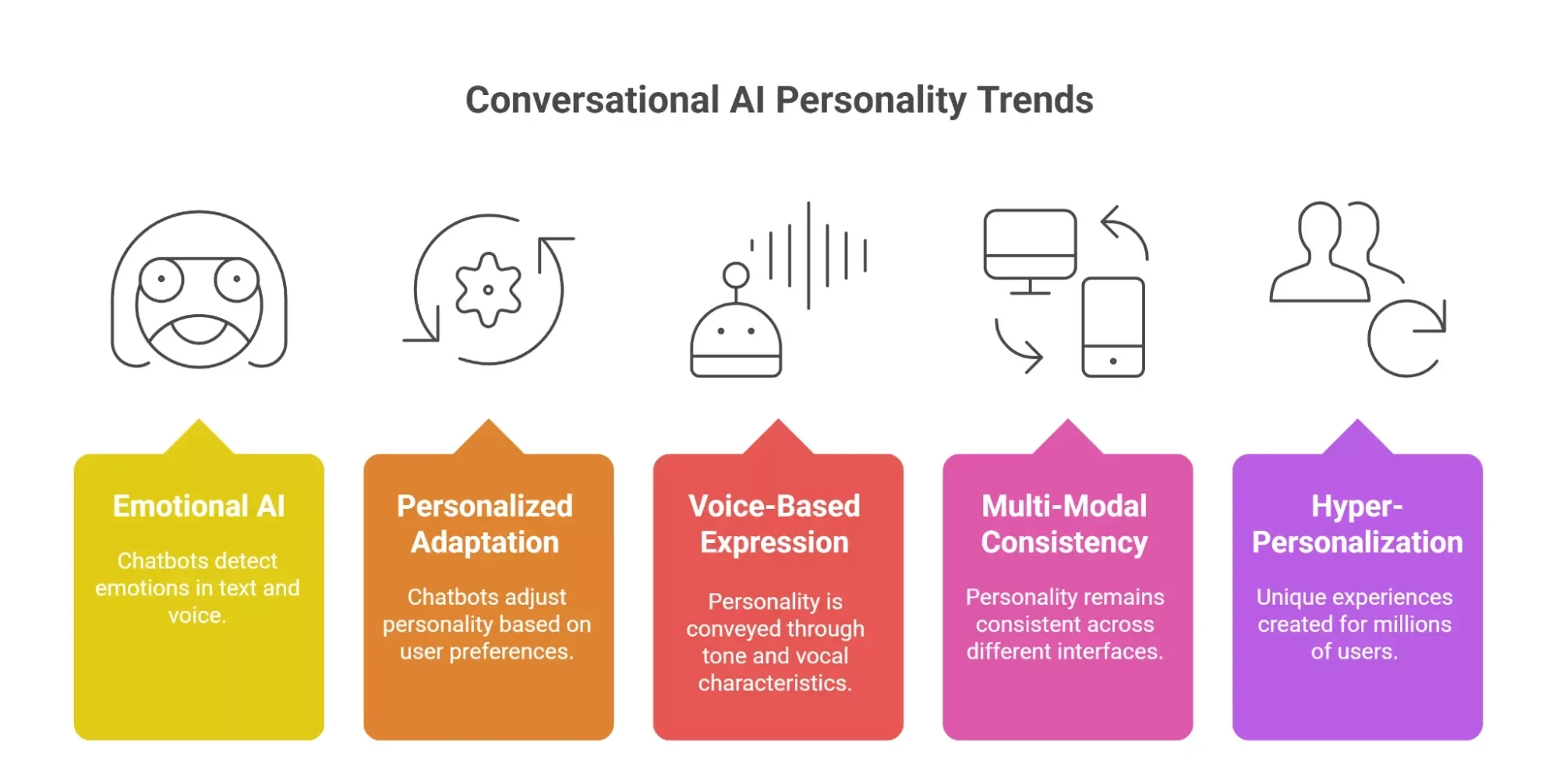
The technology driving chatbot personality is advancing rapidly. Understanding these trends helps future-proof conversational AI strategies.
Emerging AI Personality Technologies
Emotional AI is becoming more sophisticated, allowing chatbots to detect subtle emotional cues in text and voice interactions. Future conversational AI will respond to frustration before customers explicitly express it.
Personalized Personality Adaptation will enable chatbots to adjust their personality for individual users based on past interaction preferences. Conversational AI might be more formal with some customers and more casual with others, automatically.
Multi-Modal and Hyper-Personalized Experiences
Voice-Based Personality Expression is expanding beyond text chat into voice interfaces. Tone, pacing, and vocal characteristics become new dimensions of personality design.
Multi-Modal Personality Consistency will maintain the same personality traits across text, voice, and even visual interfaces as augmented reality and virtual reality become common customer interaction channels.
Hyper-Personalization at Scale combines personality design with individual customer data to create unique experiences for millions of users simultaneously.
The integration of conversational AI with search engine optimization continues to evolve. Chatbots now provide valuable insights into user search behavior, helping businesses understand which questions customers ask most frequently and optimizing content accordingly.
Why Your Business Needs AI Chatbot Personality Now
The window for competitive advantage through conversational AI personality is closing rapidly. Early adopters are already seeing significant benefits. Businesses that delay will find themselves playing catch-up in an increasingly automated customer service landscape.
Customers are already comparing chatbots to the best ones they’ve experienced elsewhere. They don’t care that those other chatbots belong to companies with larger budgets. They only know that some automated interactions feel helpful and human while others feel cold and robotic.
The good news? Implementing conversational AI with effective personality design is more accessible than ever. Companies don’t need a team of AI researchers. They need a clear strategy, the right technology partner, and commitment to continuous improvement.
Bitcot helps businesses bridge this gap by delivering AI automation solutions that combine technical excellence with strategic personality design, ensuring chatbot implementations drive real customer satisfaction improvements.
Start Building Your Conversational AI Chatbot Today
Building conversational AI with genuine personality takes expertise, but the business impact makes it worth the investment.
Start by auditing your current chatbot’s performance. Collect feedback, identify friction points, and document where human-like interaction could improve customer experiences.
Next, define the ideal chatbot personality based on your brand identity and customer preferences. Create clear guidelines that balance professionalism with approachability.
Partner with an experienced AI automation agency that understands both technology and the human side of conversational design. Look for teams with proven success in implementing personality-driven conversational AI. Bitcot helps enterprises build intelligent automation solutions that deliver measurable business results while maintaining authentic customer connections.
Implement conversational AI in stages. Begin with high-volume, low-complexity interactions where personality enhancements can create immediate impact. Measure results carefully and expand to more complex interactions as the system demonstrates its value.
Most importantly, commit to the long game. Building a great conversational AI personality is an ongoing process of refinement, learning, and adaptation.
The companies earning customer loyalty today are not just automating conversations. They are humanizing them to make customers feel valued and understood.
Competitors are already evolving. Customers expect better. The technology is ready. The question is: will you lead or follow?
The future of customer experience is conversational, intelligent, and unmistakably human.
Ready to transform your customer experience with personality-driven conversational AI? Connect with Bitcot to discover how AI automation can humanize your customer interactions and drive measurable business results.



